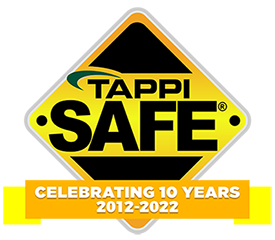 Search
Search
Use the search bar or filters below to find any TAPPI product or publication.
Filters
Content Type
Publications
Level of Knowledge
Collections
Journal articles

Magazine articles

Probing the molecular weights of sweetgum and pine kraft lignin fractions, TAPPI Journal June 2021
ABSTRACT: The present investigation undertook a systematic investigation of the molecular weight (MW) of kraft lignins throughout the pulping process to establish a correlation between MW and lignin recovery at different extents of the kraft pulping process. The evaluation of MW is crucial for lignin characterization and utilization, since it is known to influence the kinetics of lignin reactivity and its resultant physico-chemical properties. Sweetgum and pine lignins precipitated from black liquor at different pHs (9.5 and 2.5) and different extents of kraft pulping (30•150 min) were the subject of this effort. Gel permeation chromatography (GPC) was used to determine the number average molecular weight (Mn), mass average molecular weight (Mw), and polydispersity of the lignin samples. It was shown that the MW of lignins from both feedstocks follow gel degradation theory; that is, at the onset of the kraft pulping process low molecular weight-lignins were obtained, and as pulping progressed, the molecular weight peaked and subsequently decreased. An important finding was that acetobromination was shown to be a more effective derivatization technique for carbohydrates containing lignins than acetylation, the technique typically used for derivatization of lignin.
Journal articles

Magazine articles

Control of malodorous gases emission from wet-end white water with hydrogen peroxide, TAPPI Journal October 2021
ABSTRACT: White water is highly recycled in the papermaking process so that its quality is easily deteriorated, thus producing lots of malodorous gases that are extremely harmful to human health and the environment. In this paper, the effect of hydrogen peroxide (H2O2) on the control of malodorous gases released from white water was investigated. The results showed that the released amount of total volatile organic compounds (TVOC) decreased gradually with the increase of H2O2 dosage. Specifically, the TVOC emission reached the minimum as the H2O2 dosage was 1.5 mmol/L, and meanwhile, the hydrogen sulfide (H2S) and ammonia (NH3) were almost completely removed. It was also found that pH had little effect on the release of TVOC as H2O2 was added, but it evidently affect-ed the release of H2S and NH3. When the pH value of the white water was changed to 4.0 or 9.0, the emission of TVOC decreased slightly, while both H2S and NH3 were completely removed in both cases. The ferrous ions (Fe2+) and the copper ions (Cu2+) were found to promote the generation of hydroxyl radicals (HOœ) out of H2O2, enhancing its inhibition on the release of malodorous gases from white water. The Fe2+/H2O2 system and Cu2+/H2O2 system exhibited similar efficiency in inhibiting the TVOC releasing, whereas the Cu2+/H2O2 system showed better perfor-mance in removing H2S and NH3.
Journal articles

Magazine articles

Evaluation of rice straw for purification of lovastatin, TAPPI Journal November 2021
ABSTRACT: Cholesterol synthesis in the human body can be catalyzed by the coenzyme HMG-CoA reductase, and lovastatin, a key enzyme inhibitor, can reduce hypercholesterolemia. Lovastatin can be obtained as a secondary metabolite of Aspergillus terreus ATCC 20542. In this study, rice straw of lignocellulose was used in aeration and agitation bath fermentation in a 1-L flask, and a maximal crude extraction rate of 473 mg/L lovastatin was obtained. The crude extract was treated with silica gel (230•400 mesh) column chromatography. Ethyl acetate/ethanol (95%) was used as the mobile phase, and isolation was performed through elution with various ethyl acetate/ethanol ratios. The highest production rate of 153 mg/L was achieved with ethyl acetate/ethanol in a ratio of 8:2. The lovastatin gained from the crude extract was added to 12 fractions treated with 0.001 N alkali, and acetone was then added. After 24 h of recrystallization at 4°C, the extract underwent high-performance liquid chromatography. The purity had increased from 25% to 84.6%, and the recovery rate was 65.2%.
Journal articles

Magazine articles

Kraft pulp viscosity as a predictor of paper strength: Its uses and abuses, TAPPI Journal October 2023
ABSTRACT: For bleached kraft pulps, two factors govern paper strength: the individual fiber strength, and the bond strength that adheres the individual fibers together in the paper matrix. Inherent fiber strength is related to the length of the carbohydrate polymers, also known as the degree of polymerization (DP). Average DP (DP) is inferred by performing pulp viscosity measurements. Under certain circumstances during kraft pulping and bleaching, the average polymer lengths can be shortened, resulting in lower pulp viscosity, and may indicate fiber damage. Fiber damage typically manifests itself as a reduction in tear strength for well-bonded handsheets.This paper will review the literature on how pulp viscosity can predict paper/fiber strength and how it can be used as a diagnostic tool. It can be a means to monitor pulp quality during pulping and bleaching, as well as to alert when such operations approach a critical threshold. However, viscosity losses must be carefully and judiciously analyzed. Like most diagnostic tools, viscosity measurements can be misused and abused, which can lead to incorrect inferences about intrinsic fiber strength. This review will also cover these misuses. The overall goal is to provide the papermaker a better understanding of what pulp viscosity is, how it correlates to potential sheet strength, and what its limitations are. It will be illustrated that when pulp viscosity drops below a critical value, it will indicate an appreciable deterioration in the paper’s tear and tensile strength.
Journal articles

Magazine articles

Dynamic out-of-plane compression of paperboard — Influence of impact velocity on the surface, TAPPI Journal February 2024
ABSTRACT: Processes that convert paperboard into finished products include, for example, printing, where the paperboard is subjected to rapid Z-directional (ZD) compression in the print nip. However, measuring and evaluating the relevant properties in the thickness direction of paperboard are not necessarily straightforward or easy. Measuring at relevant, millisecond deformation rates further complicates the problem. The aim of the present work is to elucidate some of the influences on the compressive stiffness. Both the initial material response and the overall compressibility of the paperboard is studied. In this project, the effect on the material response from the surface structure and the millisecond timescale recovery is explored.The method utilized is a machine called the Rapid ZD-tester. The device drops a probe in freefall on the substrate and records the probe position, thus acquiring the deformation of the substrate. The probe is also allowed to bounce several times on the surface for consecutive impacts before being lifted for the next drop. To investigate the time dependent stiffness behavior, the probe is dropped several times at the same XY position on the paperboard from different heights, thus achieving different impact velocities. The material response from drops and bounces combined allows study of the short-term recovery of the material. The material in the study is commercial paperboard. The paperboard samples are compared to material where the surface has been smoothed by grinding it. Our study shows that there is a non-permanent reduction in thickness and a stiffening per bounce of the probe, indicating a compaction that has not recovered in the millisecond timescale. Additionally, a higher impact velocity has an initial stiffening effect on the paperboard, and this is reduced by smoothing the surface.
Journal articles

Magazine articles

Recovery boiler back-end heat recovery, TAPPI Journal March 2023
ABSTRACT: Sustainability and efficient use of resources are becoming increasingly important aspects in the operation of all industries. Recently, some biomass-fired boilers have been equipped with increasingly complex condensing back-end heat recovery solutions, sometimes also using heat pumps to upgrade the low-grade heat. In kraft recovery boilers, however, scrubbers are still mainly for gas cleaning, with only simple heat recovery solutions. In this paper, we use process simulation software to study the potential to improve the power generation and energy efficiency by applying condensing back-end heat recovery on a recovery boiler. Different configurations are considered, including heat pumps. Potential streams to serve as heat sinks are considered and evaluated. Lowering the recovery boiler flue gas temperature to approximately 65°C significantly decreases the flue gas losses. The heat can be recovered as hot water, which is used to partially replace low-pressure (LP) steam, making more steam available for the condensing steam turbine portion for increased power generation. The results indicate that in a simple condensing plant, some 1%•4% additional electricity could be generated. In a Nordic mill that provides district heating, even more additional electricity generation, up to 6%, could be achieved. Provided the availability of sufficient low-temperature heat sinks to use the recovered heat, as well as sufficient condensing turbine swallowing capacity to utilize the LP steam, the use of scrubbing and possibly upgrading the heat using heat pumps appears potentially useful.
Magazine articles

Optical properties of pulp and paperâ?? New standardization proposals, December 1995 Tappi Journal [95Dec45.pdf]
Optical properties of pulp and paper - new standardization proposals, TAPPI JOURNAL, December 1995, Vol. 78(12)
Journal articles

Magazine articles

A case study review of wood ash land application programs in North America, TAPPI Journal February 2021
ABSTRACT: Several regulatory agencies and universities have published guidelines addressing the use of wood ash as liming material for agricultural land and as a soil amendment and fertilizer. This paper summarizes the experiences collected from several forest products facility-sponsored agricultural application programs across North America. These case studies are characterized in terms of the quality of the wood ash involved in the agricultural application, approval requirements, recommended management practices, agricultural benefits of wood ash, and challenges confronted by ash generators and farmers during storage, handling, and land application of wood ash.Reported benefits associated with land-applying wood ash include increasing the pH of acidic soils, improving soil quality, and increasing crop yields. Farmers apply wood ash on their land because in addition to its liming value, it has been shown to effectively fertilize the soil while maintaining soil pH at a level that is optimal for plant growth. Given the content of calcium, potassium, and magnesium that wood ash supplies to the soil, wood ash also improves soil tilth. Wood ash has also proven to be a cost-effective alternative to agricultural lime, especially in rural areas where access to commercial agricultural lime is limited. Some of the challenges identified in the review of case studies include lengthy application approvals in some jurisdictions; weather-related issues associated with delivery, storage, and application of wood ash; maintaining consistent ash quality; inaccurate assessment of required ash testing; potential increased equipment maintenance; and misconceptions on the part of some farmers and government agencies regarding the effect and efficacy of wood ash on soil quality and crop productivity.
Magazine articles

A financial analysis of north american pulp and paper companies, TAPPI JOURNAL, July 2000, Vol. 83(7)
A financial analysis of north american pulp and paper companies, TAPPI JOURNAL, July 2000, Vol. 83(7)
Magazine articles

The role of science in setting the environmental agenda, TAPPI JOURNAL, September 2000, Vol. 83(9)
The role of science in setting the environmental agenda, TAPPI JOURNAL, September 2000, Vol. 83(9)






